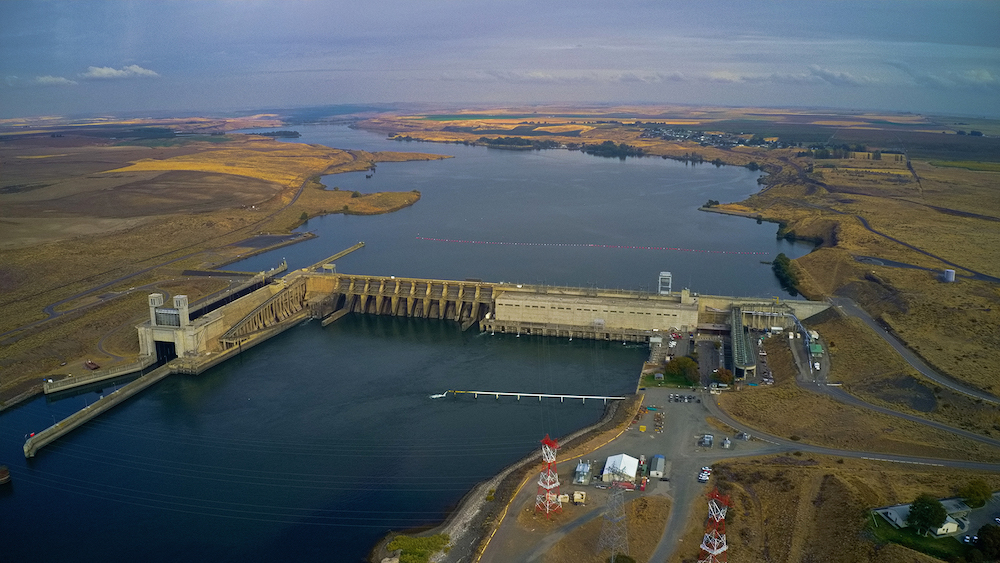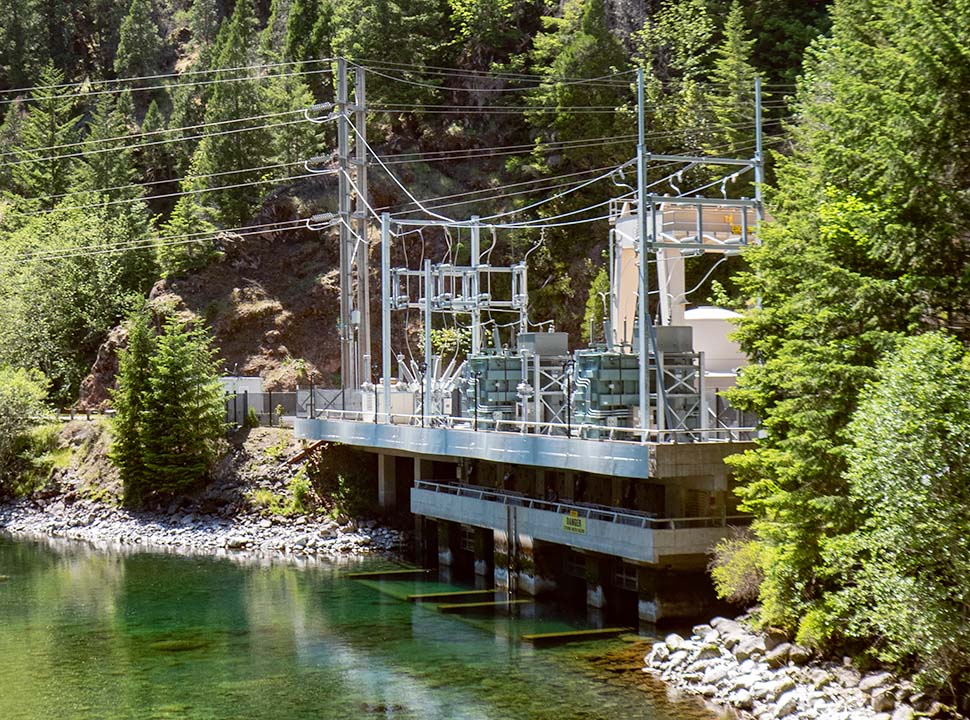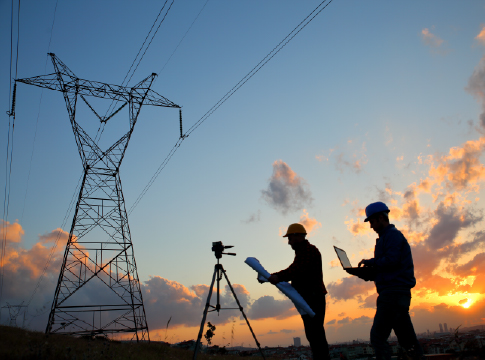Related News
Related News
-
Sustainability Snapshot - Celebrating Energy Efficiency Projects in the Community
Sustainability Snapshops highlight impactful projects completed by EWEB's Customer Solutions department, as a way to celebrate the meaningful work happening behind the scenes.
Find Out More -
Women in STEM: Meet the Hydro Project Engineer Building Habitat for Salmon
EWEB Engineer Associate Val Chang found her way to the McKenzie River from Los Angeles, inspired by heritage trips to the waters of Taiwan and key mentors along the way.
Find Out More -
Public Power Week Poster Contest Winners 2025
The results are in! View the winning posters from EWEB's 2025 Public Power Week Poster Contest.
Find Out More -
EWEB Hometown Heroes compete internationally
Out of 290 teams from 14 different countries, EWEB's Lineman Rodeo team places in the top third of competitors.
Find Out More -
Vote for your favorite Public Power Week Posters
The top five submittals will receive awards. Help us pick the winners.
Find Out More -
Electric Projects underway in North & South Eugene
Underground lines and disaster-resilient power poles are part of EWEB’s infrastructure upgrade near Eugene’s largest natural resource area.
Find Out More -
The Bonneville Power Administration Rate Change and Your EWEB Bill
BPA’s finalized rate increase is smaller than projected, and EWEB’s pass-through adjustment effective October 1, 2025 will now be 2.7% for residential customers—down from the anticipated 4%.
Find Out More -
EWEB completes helicopter installation of salmon habitat features
EWEB adds downed trees and 2,000 tons of gravel to the Uupper McKenzie River below Tamolitch Falls to improve spawning habitat.
Find Out More -
Court rules in favor of EWEB in Carmen-Smith litigation
The U.S. District Court in Eugene has granted EWEB's motion to dismiss a lawsuit brought under the Endangered Species Act pertaining to fish passage at EWEB’s Trail Bridge Dam. The favorable ruling clears the way for EWEB to continue advancing towards implementation of permanent fish passage at the dam.
Find Out More -
EWEB proposes modified plan for permanent fish passage at Trail Bridge Dam
After eight months of extensive collaboration and analysis with scientific experts at two federal regulatory agencies, EWEB is proposing an improved plan to build permanent fish passage facilities at Trail Bridge Dam on the McKenzie River.
Find Out More -
Sustainability Snapshot - Ideal Steel July 2025
Our second Sustainability Snapshop highlights a project where EWEB helped a local industrial warehouse upgrade over 1,000 flourescent lights to new efficient LEDs.
Find Out More -
EWEB prepares for wildfire season with risk mitigation measures
EWEB is building a more resilient electric system to weather various types of disasters, from wildfire to winter storms.
Find Out More -
EWEB, Lane County host open house to gather feedback for “Leaburg Transportation Alternatives Analysis”
“What is the Future of the Leaburg Dam Bridge?” open house exhibit on display at Lloyd Knox Park Visitor Pavilion through July 25
Find Out More -
Improving habitat resiliency throughout the Upper McKenzie
Environmental Responsibility is a core guiding value for EWEB decision-making. This summer, EWEB continues its commitment to environmental stewardship with a robust slate of habitat enhancement updates throughout the upper McKenzie River, across the footprint of the Carmen-Smith Hydroelectric Project.
Find Out More -
EWEB weighs multi-billion-dollar decision affecting energy supply
EWEB is weighing energy supply decisions that will cost nearly $2 billion over the next two decades.
Find Out More - Show More
EWEB secures $2.5 billion of reliable, affordable, carbon-free energy for customers
November 24, 2025 • Aaron Orlowski, EWEB Communications

EWEB has signed a new contract with the Bonneville Power Administration (BPA) that runs through 2044, securing access to between $2.5 and $3 billion worth of energy.
BPA is a federal agency that sells energy from large dams on the Columbia and Snake Rivers, as well as the Pacific Northwest’s sole nuclear power plant, the Columbia Generating Station. Energy from BPA makes up about 80% of EWEB’s energy supply.
“For many decades, BPA has been a dependable partner, and we are glad to continue that partnership for another two decades,” said EWEB Chief Energy Resources Officer Brian Booth.
For EWEB customers, the cost of procuring energy accounts for about 30% of their total electric and water bills. Other costs accounted for in the bill include building and maintaining the poles and wires that deliver energy, building water storage reservoirs, providing customer support and maintaining fleet vehicles.
Energy from BPA’s system is among the least expensive available. Federal law gives community-owned, nonprofit utilities in the Pacific Northwest, such as EWEB, priority access to BPA’s low-cost hydropower, which largely comes from dams that were built between the 1930s and 1970s. This hydropower enables EWEB to charge customers rates that are significantly lower than other utilities in the region.
BPA’s hydropower system also enables to EWEB to maintain a power supply that is both more than 90% carbon-free and flexible enough to meet swings in customers’ energy demand.
“When cold weather hits, our customers’ electric heaters kick into overdrive, and so does the hydropower system as it works harder to keep homes warm and the lights on,” Booth said. “No other energy technology today can generate that kind of abundant, carbon-free energy exactly when we need it.”
In-depth analysis drove BPA contract choice.
In 2023, EWEB worked through an integrated resource planning process to weigh the tradeoffs between different energy resources the utility could procure to meet customers’ energy needs. The process resulted in several action items to conduct additional study and had one especially firm conclusion: BPA hydropower was the best option to continue to form the foundation of EWEB’s energy resource portfolio.
But BPA, which has contracts with community-owned utilities across the Northwest, was concluding one contract period and launching negotiations for another. The new contracts need to be signed by the end of 2025 and will officially commence in 2028.
As part of the contract development process, BPA developed a suite of “products” from which community-owned utilities could choose. Those products outlined when and how much energy BPA would deliver to a utility and laid a framework for how prices would be calculated. The different products were meant to give utilities options so they could develop an energy portfolio that aligned best with their customers’ energy needs, their own staffing abilities and their existing non-BPA resources.
EWEB needed to choose a product that aligned with its unique characteristics: the largest community-owned utility in Oregon with a highly involved customer base, several local energy suppliers, a major university and a highly flexible mid-sized hydropower facility on the McKenzie River — the Carmen-Smith Hydroelectric Project.
EWEB staff conducted nearly two years of analysis and public engagement — including by launching a focus group of diverse community representatives called the Community Table — to parse out the differences between the products. Ultimately, EWEB chose a product — called “block with shaping” — that aligns with EWEB’s strengths.
“We are making a bet on our customers,” said EWEB Chief Energy Resources Officer Brian Booth. “The BPA product we chose gives us more flexibility to meet our customer’s energy needs, but it also gives us more responsibility. When we dug into the finances of the various products, we found if we dedicate ourselves to deep partnerships with our customers, we can keep costs lower than if we had chosen to go all-in on BPA.”
More Information
EWEB’s Integrated Resource Plan (IRP) will analyze possible energy resource portfolios with a goal of creating useful insights for long-term (20-year) electricity supply planning decisions.




